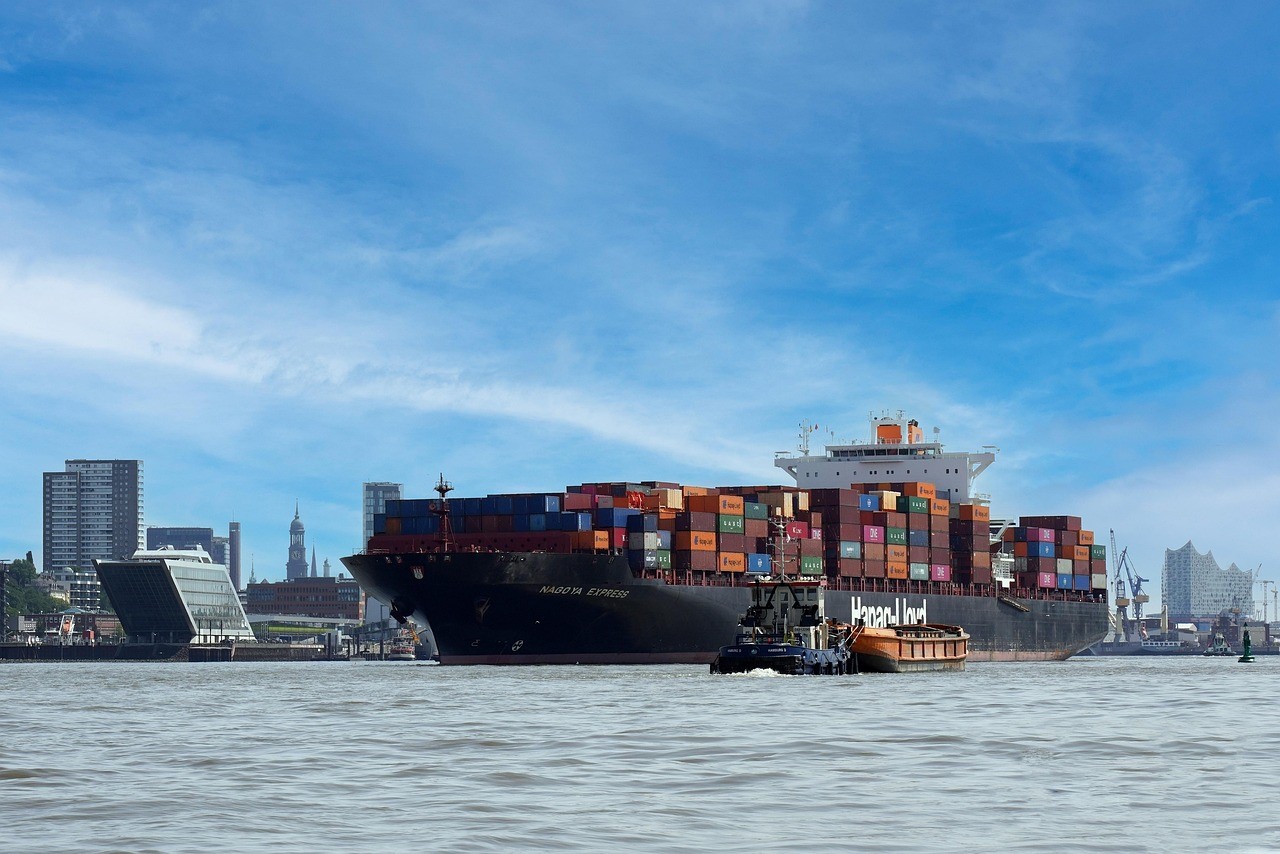
Emission calculation is an important first step in order for an organisation to plan emission reductions. It is important to understand what the emissions comprise and what the organisation can affect.
Emission calculation should be developed gradually. In the terminological jungle you focus on what is important and take clear, practical steps on the path of emission calculation. Take one step at a time so that you can communicate your actions to your different stakeholders in a transparent manner.
The simple formula of emission calculation
Usually, emission calculation makes use of emission coefficients and their unit depends on the emission source. For example, the emission coefficient of electricity consumption is kgCO2/MWh. The emission coefficient of gasoline or liquified natural gas (LNG) is usually stated as t/TJ. The coefficient for transport of goods is t/tkm and for waste kg/t.
The calculation itself is simply multiplication. The simple formula of emission calculation is as follows:
Data (such as consumption of electricity or fuel, amount of waste, amount of acquired raw material) * emission coefficient = emissions
The formula is simple, but the challenge is in defining the emission coefficients and gathering the primary data created from the business processes.
How is the amount of greenhouse gases calculated?
You should consider the following phases when calculating the amount of greenhouse gases caused.
1. For what purpose is the calculation made?
You should first establish why you are calculating emissions. Will the results of the calculation be utilised in the organisation’s strategic and daily decision-making in order to reduce emissions? Are you calculating emissions because external stakeholder groups require you to do so? With what kind of precision will the emission levels be communicated to these groups? Is the objective fulfilling specific sustainability reporting obligations? Are you trying to understand the impact the emissions have on the organisation’s value creation? Is emission calculation a risk management measure? Are you trying to find out the total emissions caused by your activities in order to compensate them?
The purpose and objective of emission calculation affect the entire process, its level of precision and how often it is carried out.
2. Setting boundaries regarding which activities will be considered
In large and complex organisations, one of the first tasks is setting boundaries for the emission calculation based on organisational structure.
This defines which emission sources that represent various parts of the organisation will be included in the emission calculation.
According to the GHG protocol, organisational boundaries can be set according to
– Equity share
– Control, in which case the calculation will include emissions caused by functions controlled by the company (either financially or operationally)
3. Identifying emission sources
In order to carry out emission calculation, the company’s entire value chain must be established and its various phases described.
Then, the emission sources created in various phases of the value chain are identified and categorised into direct and indirect emission sources. In other words, the emission sources are divided into Scope 1, Scope 2 and Scope 3 emissions in accordance with the Greenhouse Gas (GHG) protocol. Finally, it is decided which emissions will be included in the emission calculation. Will you first only calculate Scope 1 and Scope 2 emissions? Will the emission calculation be gradually expanded to Scope 3 emissions?
You should keep your eye on what is essential when considering Scope 3 emissions. Assess and define which categories of Scope 3 emissions are relevant for emission calculation. The relevance and materiality can be defined based on various perspectives and the objectives the company has defined for the emission calculation will also have an impact. Emissions should be included in the calculation if
- The emission category constitutes a significant portion of the company’s overall emissions.
- Emissions of the category have an impact on the company’s climate-related risks.
- They play a critical role for stakeholder groups.
- The company can have a significant impact on reducing them.
4. Identification and definition of data sources
Data required for emission calculation is created and recorded in different parts of the organisation. Data is generated from, for example, electricity and water consumption, acquisitions, transport kilometres and recycled waste. Data is recorded in various IT systems such as enterprise resource planning systems (ERP), a water meter at the back of storage hall and in electricity, gasoline and waste management invoices.
Various actors throughout the value chain have data related to indirect emissions. Data can be obtained from contract manufacturers, suppliers, logistics service providers, packaging material suppliers, waste handlers and customers.
You should collaborate with representatives of the organisation’s various units in assessing the current situation and identifying data sources. IT and data experts understand the organisation’s data as a whole. Discussing with representatives of production facilities provides a more practical aspect to data sources. You should notice that data sources may differ between various production facilities.
Partners in the value chain are identified as data sources for relevant categories of Scope 3 emissions. This also allows identifying which partners have the most significant impact on emissions and their ability to provide emission coefficients of the raw materials or packaging materials they provide, for example.
The reliability of data sources should also be assessed.
5. Establishing the level of precision
In theory, emission calculation itself is simply multiplication. However, practical considerations make the process quite a bit more involved both during the collection of data created in various phases of the value chain and in calculating or establishing the emission coefficients.
You will have an overview of the current situation once the data sources and their reliability has been identified. The survey allows you to establish where the primary data regarding your activities is available, in which format and how often. The GHG Protocol refers to this data as “activity data”. Here, “activity” refers to any operation or function that cause emissions.
The survey also helps you to identify what data is not yet available. When assessing the level of precision, you should consider how to replace data that is not available or whether to exclude it from the calculation. Missing data can be replaced with secondary data on averages. There are many databases where you can find averages.
It is important that you do not bite off more than you can chew in emission calculation, and instead improve the precision of calculation gradually and always keeping significance in mind. You should aim to use as precise methods as possible for calculating the most significant emissions. Similarly, the smaller the emission source in question, the rougher at least the initial calculation can be.
6. Organising data collection
Once the company has identified the operations to be included in the emission calculation and identified the data sources, the following step is to gather data from the various sources.
The process of data collection is defined in order to maximise the reliability of data and have data collection be as comprehensive and effective as possible. Data gathered from various sources should also be cohesive in structure in order for it to be summed and consolidated across various organisational structures or levels.
There are many factors to consider. Who manages the data required for emission calculation? Who gathers the data or is it gathered automatically from various systems? Where will the data be gathered and where will the emissions be calculated? How often will data be gathered? Will a tool that allows managing the data and calculation be utilised for data gathering, management and emission calculation?
The lack of reliable data originated from the functions of the value chain is often a significant limit in carrying out emission calculation. A systematic data gathering process and tools play a key role in reliable emission calculation.
7. Calculation principle and establishing emission coefficients
The most common way to carry out emission calculation is to use emission coefficients. Pioneering companies have calculated emission coefficients for their products and services. There is a great number of databases regarding various sectors and geographical regions. Some sources of emission coefficients are public while others require payment.
The GHG Protocol recommends using precise primary data created from the functions for significant emission sources and less precise data for smaller emission sources. You can employ the same principle for emission coefficients. Organisations make choices, such as whether they will use country-specific coefficients for energy sources or coefficients provided by energy suppliers in calculating their Scope 2 emissions. In addition, there is significant variability in suppliers’ ability to provide coefficients required for emission calculation. Some emissions will be calculated using average coefficients derived from literature and databases. The GHG protocol provides instructions for calculating Scope 3 emissions.
8. Emission calculation
Once most of the background work has been done, emission calculation is a fairly simple process. The calculation can be carried out in Excel or using a tool designed for sustainability management and reporting.
9. Managing data and calculations
Emission calculation is a continuous process. Data gathering and management must be in order so as to calculate emissions in a comparable and reliable manner. As requirements and capabilities develop, the quality and comprehensiveness of data included emission calculation increases. Emission sources are added to the calculation of Scope 3 emissions, the comprehensiveness of primary data is improved and more precise emission coefficients are employed. This underscores the value of the required skills and digital tools used to continuously manage and update emission calculation.
Be transparent
In order to make the principles of emission calculation as transparent as possible, you should communicate regarding the limits, data sources and emission coefficients used. You should also openly provide the reasoning behind the various decisions.
Emission calculation is always carried out based on the best available data available at the moment. Gradually it is made better and more precise.
***
If your company aims to systematise emission calculation, please contact us. We offer a solution for gathering data from various parts of your organisation and value chain as well as calculating emissions.
































